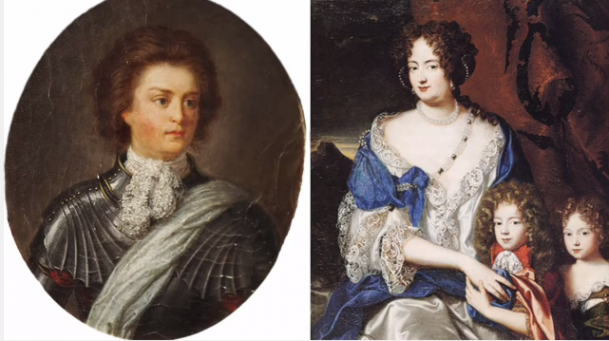DNA analysis will help uncover the 322-year-old murder

After scientists learned how to carry out DNA sequencing, law enforcement agencies began to actively use it. More than a dozen thousand crimes have been solved only because the attacker left a DNA sample at the crime scene. I used to have to mess around with blood type analysis. This is far from the most accurate and reliable method for establishing the identity of a criminal. But law enforcement officers also used other not very reliable and simple methods of proving a person’s involvement in a crime.
And now, experts even reveal “visies” that are many dozens or even hundreds of years old. Thanks to DNA tests, wrongfully convicted people are leaving the prisons. One of the most noticeable cases is happening now - scientists are trying to solve a crime that was committed 322 years ago. It would be superfluous to say that not only the participants of the action and possible witnesses, but also several generations of their descendants died long ago. True, the crime itself was still too significant to be forgotten.
So, we have a rather unusual love story. A young man from high society meets a married woman, whose status is even higher, they fall in love with each other. Suddenly, the young man disappears. Indirect evidence shows that the young man was killed by a high-ranking aristocrat, the future king. He is the husband of this woman who could not tolerate such humiliation on the part of his wife, and began to act quickly and rudely. After the incident, he divorces her and sends her into exile until the end of days.
We are talking about the Swedish graph Philip Christoph von Königsmarck (Philip Christoph Königsmarck) and the German princess Sofia Dorothee Braunschweig-Zellsky(Sophia Dorothea of Celle). Her husband of the princess Georg Ludwig, the future king of Great Britain George I, was the husband of the princess. The marriage seemed happy, but after the birth of the children the spouses cooled to each other. Kurprinz started a relationship on the side, and the princess was left with nothing.
After a while she met a childhood friend, Count Philip Christoph von Koenigsmark. After this relationship became known to the world, the count suddenly disappeared. It was never exactly known what happened to him. The body was not found then, and the count began to be considered missing. After the disappearance of a high-ranking official of this level, a scandal began on a national scale.
Almost immediately, Sophia Dorothea was sent to the Alden Castle, from where they were taken to another palace, where the divorce process took place. She was recognized for adultery, Sophia Dorothea was denied the right to remarry and see her children. She lost her title.
After that, she lived a long, but not too remarkable life in the same castle. Sophia Dorothea was allowed to be called the Princess of Alden at her place of residence. In the first years she showed complete apathy and indifference, but then tried to change her fate. When her former father-in-law died in 1698, Sofia Dorothea sent a letter to her ex-husband with condolences and supplications for forgiveness and a date with children. She wrote a letter of condolence to Elector Sophia, but none of the letters had a reaction.
At the end of her life, she began to eat a lot. As a result of the lack of sufficient physical activity and overeating, Sophia Dorothea began to gain weight quickly, and her health deteriorated. She died from a blockage of the gallbladder in 1726.
As for her lover, here the story received an unexpected development in August of this year. On August 11, workers who renovated one of the castles of George I found a buried skeleton, which they almost immediately began to be considered the remains of a count. The initial test indicated that the skeleton is several hundred years old. A little later, representatives of the University of Gotting extracted DNA samples and analyzed them. “If these are really the remains of Philip Christoph von Koenigsmark, then we will get a sensation,” said the head of the Hannover History Museum in August.
Indeed, this story became the basis for many books and films. In many ways, this was made possible due to the fact that the two-year correspondence of lovers came to the Hanover Museum virtually untouched. She attracted creative people to the duality of the relationship of the time, as well as the fact that the injured party in this story, according to many, is still a girl. Georg Ludwig, even according to his mother, was not a very good person.
Now the DNA is still being analyzed, but soon the answer to whose remains the workers found must be obtained. The results of the DNA analysis extracted from the skeleton will soon be compared with the results of the DNA analysis of the living relatives of Philip Christoph von Königsmark, who agreed to take part in this matter. And then the love story of two aristocrats of the 17th century will get its logical conclusion.
